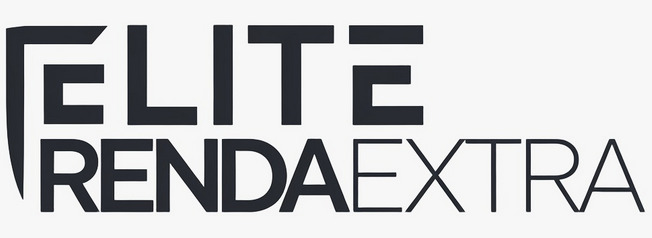Navigating the world of finance in Canada can sometimes feel like an intricate puzzle, especially when you’re considering borrowing money. With a diverse range of financial products available, understanding your options is the first and most crucial step toward making a decision that aligns with your personal or business goals.
This exploration is designed to demystify the landscape of borrowing. By gaining clarity on the different types of loans, their purposes, and how they function, you can empower yourself to identify the financial tools best suited for your unique circumstances. It’s about building a foundation of knowledge for a more secure financial future.
Understanding the Basics: Secured vs. Unsecured Loans
Before diving into a specific list, it’s essential to grasp the fundamental difference between the two main categories of loans in Canada: secured and unsecured. This distinction impacts everything from interest rates to eligibility requirements.
A secured loan is one that is backed by an asset you own, known as collateral. This could be your car, your home, or another valuable possession. Because the lender has a way to recover their money if you default on payments (by claiming the collateral), these loans are considered lower risk. Consequently, they often come with more favourable interest rates and potentially higher borrowing limits. Mortgages and car loans are classic examples.
Conversely, an unsecured loan does not require any collateral. The lender makes their decision based solely on your financial standing, including your credit score, income, and history of managing debt. Because the lender assumes more risk, unsecured loans typically have higher interest rates than their secured counterparts. Personal loans and most lines of credit fall into this category.
A Closer Look at 10 Popular Loan Options in Canada
With the basics covered, let’s explore some of the most common loan options available to Canadians today. Each serves a different purpose and comes with its own set of characteristics.
1. Unsecured Personal Loans
This is perhaps the most versatile type of financing. An unsecured personal loan provides you with a lump sum of cash that you can use for almost any purpose, from consolidating high-interest debt to funding a home renovation or covering an unexpected expense. Repayment is made in fixed monthly instalments over a predetermined period (the term), typically ranging from one to five years. The interest rate is usually fixed, making it easy to budget for your payments.
2. Secured Personal Loans
Similar to their unsecured cousins, secured personal loans provide a lump sum of cash for various needs. The key difference is the requirement of collateral. By securing the loan with an asset, such as a paid-off vehicle or a guaranteed investment certificate (GIC), you may be able to access a larger loan amount or a lower interest rate, even if your credit score isn’t perfect. This is a common choice for individuals who have valuable assets but may not qualify for the best unsecured rates.
3. Personal Lines of Credit
A line of credit offers more flexibility than a traditional loan. Instead of receiving a single lump sum, you are approved for a specific credit limit that you can draw from as needed. You only pay interest on the amount you’ve actually used, not the entire limit. Repayments are also flexible; you’re typically required to make a minimum payment (often interest-only), but you can pay back the principal at your own pace. They are excellent for managing fluctuating expenses or for having a financial safety net in place.
4. Home Equity Lines of Credit (HELOCs)
A HELOC is a specific type of secured line of credit that uses the equity in your home as collateral. Equity is the difference between your home’s market value and the outstanding balance on your mortgage. Because they are secured by one of the most stable assets, HELOCs usually offer very competitive interest rates. They are a popular choice for major expenses like large-scale renovations, investment opportunities, or post-secondary education funding.
5. Debt Consolidation Loans
If you’re juggling multiple high-interest debts, such as credit card balances or store cards, a debt consolidation loan can simplify your finances. This type of loan is used to pay off all your existing debts, rolling them into a single new loan with one monthly payment. The goal is to secure a lower overall interest rate than what you were paying across all your previous debts, which can help you save money and pay off your debt faster.
6. Vehicle Loans
Specifically designed for purchasing a new or used car, truck, or other vehicle, these are secured loans where the vehicle itself serves as the collateral. They are offered by banks, credit unions, and dealership financing departments. Terms can vary widely, often extending up to eight years. The interest rate you’re offered will depend heavily on your credit score, the age of the vehicle, and the length of the loan term.
7. Student Loans
For those pursuing post-secondary education, student loans are an indispensable resource. In Canada, these come in two main forms:
- Government Student Loans: Programs like the Canada Student Financial Assistance Program and various provincial/territorial initiatives offer loans with favourable terms, such as interest-free periods while you are in school. Eligibility is often based on financial need.
- Private Student Loans or Lines of Credit: Offered by banks and credit unions, these can supplement government funding or serve as an alternative. They function more like standard loans, with interest accruing immediately, but may offer larger amounts.
8. RRSP Loans
A uniquely Canadian option, an RRSP loan is designed to help you maximize your contribution to your Registered Retirement Savings Plan (RRSP). You borrow money to invest in your RRSP, and the subsequent tax refund you receive can be used to pay down a significant portion of the loan. It’s a strategy used to accelerate retirement savings, though it’s important to ensure the investment returns outweigh the interest paid on the loan.
9. Business Loans
For entrepreneurs and small business owners, specific business loans are available to fund everything from startup costs to expansion plans and equipment purchases. These can be secured or unsecured and are offered by traditional banks, credit unions, and government-backed entities like the Business Development Bank of Canada (BDC). Lenders will typically require a detailed business plan and will closely examine the company’s financial health and potential for success.
10. Payday Loans
It is important to mention payday loans due to their prevalence, but with a strong note of caution. These are short-term, very high-cost loans intended to be repaid on your next payday. While they are accessible and don’t require a strong credit history, they come with extremely high fees that translate to exorbitant annual interest rates. They are generally considered a last resort for emergency situations, as relying on them can lead to a difficult cycle of debt.
Key Factors to Consider Before Applying
Understanding the types of loans is only part of the equation. Before you proceed with any application, it’s wise to assess your own financial situation and understand what lenders are looking for.
Your Credit Score and History
Your credit score is a three-digit number that summarizes your credit history. Lenders in Canada use it as a primary indicator of your reliability as a borrower. A higher score generally leads to a better chance of approval and more favourable interest rates. It reflects your history of paying bills on time, how much debt you carry, and the length of your credit history.
Debt-to-Income (DTI) Ratio
This ratio compares your total monthly debt payments to your gross monthly income. Lenders use it to gauge your ability to manage monthly payments and repay new debt. A lower DTI ratio indicates that you have a good balance between debt and income, making you a less risky borrower.
Interest Rates, Fees, and Loan Terms
Always look beyond the monthly payment. Understand the Annual Percentage Rate (APR), which includes the interest rate plus any additional fees, giving you a more accurate picture of the loan’s cost. Also, be aware of the loan term (how long you have to repay it) and any potential penalties, such as for paying the loan off early.
Making an informed choice about a loan is a significant financial decision. Each individual’s circumstances are different, and what works for one person may not be suitable for another. Having a clear understanding of these common loan options available in Canada is the foundational step in navigating your financial journey with confidence and foresight.

